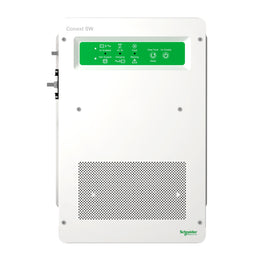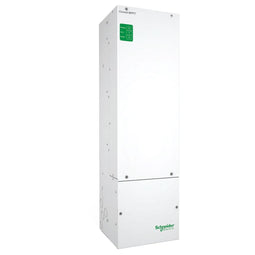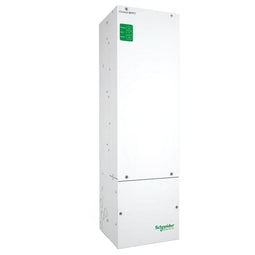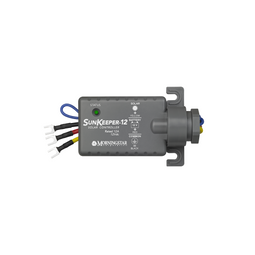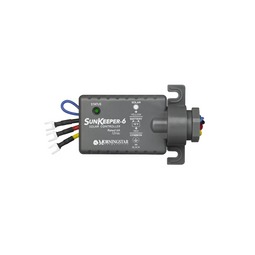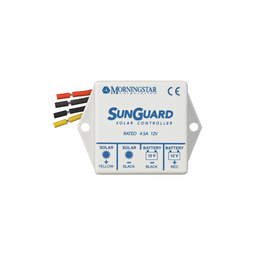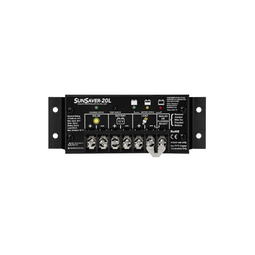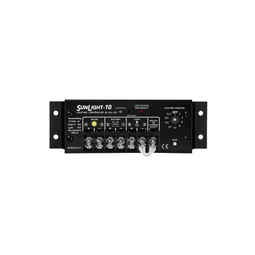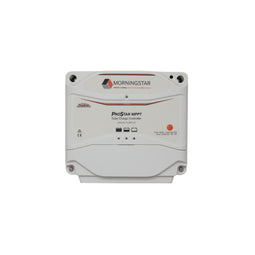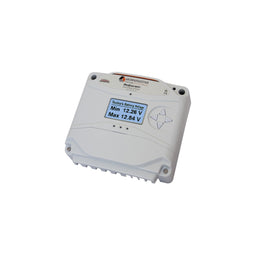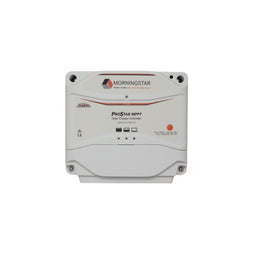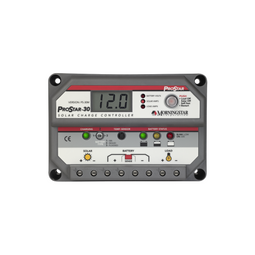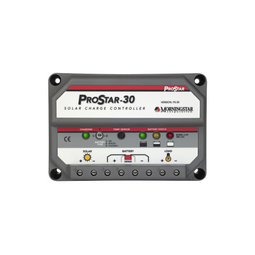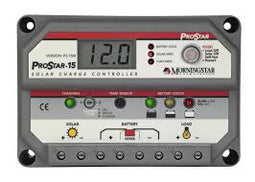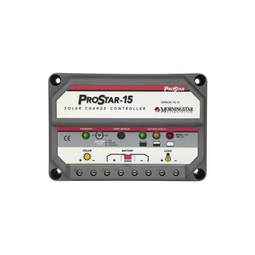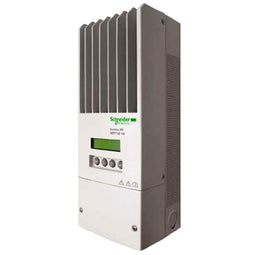About Charge Controller
A solar charge controller manages the power going into the battery bank from the solar array. It ensures that the deep cycle batteries are not overcharged during the day and that the power doesn’t run back to the solar panels overnight and drain the batteries. Some charge controllers are available with additional capabilities, like lighting and load control, but managing the power is its primary job.
A solar charge controller is available in two different technologies, PWM and MPPT. How they perform in a system is very different from each other.
What is MPPT & PWM?
The MPPT (Maximum Power Point Tracking) solar controller is the shining star of today's solar systems. These controllers actually detect the optimum operating voltage and amperage of the solar panel array and match that with the battery bank.
A PWM (Pulse Width Modulated) solar charge controller is the traditional style. They are robust, inexpensive and widely used in solar panel applications. PWM shunt controllers are used less often and mostly in applications where electrical interference is an issue.
What are charge controllers?
Charge controllers are current or voltage regulating devices that help prevent battery damage by monitoring the battery's charging and discharging.
Why does your solar power system needs a charge controller?
Solar power systems convert solar energy into electrical energy. In the process, the electricity generated by the solar panels goes through a series of events viz:
- conversion of photons into DC voltage
- DC current storage in the battery
- Conversion of DC into AC voltage by an inverter. (to feed the load)
In general, any battery will lose some of the current produced by the solar panel(s) in the form of heat energy. Albeit, following repeated cycles of charging and recharging, the battery tends to damage. The damage caused may (or not) include decreased battery capacity, lowered charge acceptance, drifting battery cells, and (at worst times) complete battery failure due to gassing and overheating.
Using a charge controller helps check the above mentioned issues to keep the battery in a healthy and functional state.
Consider a solar panel that rates at 12v. Although rated as a 12v panel, this panel will have a potential to put out 17v. This is because of the fact that the condition of a 12v panel putting out exact 12v is possible under only standard test conditions. On a regular day, solar panels may not receive the standard conditions. Hence, they come with a margin 5v which helps generate a steady output, at all times.
How do charge controllers work?
The principle behind the working of a charge controller is to monitor the electrical output of the solar panels in comparison with battery capacity and battery charge levels. Matter of fact is that, the process of voltage regulation depends on the type of charge controller you deploy with your solar power system.
However, the process varies from dumping the extra current into shunt loads (shunt charge controllers), to manipulating the output of the solar panels (MPPT charge controllers), and pulsating current output to stimulate a lower current level (PWM charge controllers). In between, there are a few other processes too.
What are the best types of charge controllers to use with solar power systems?
So far, the pulse width modulator (PWM) and Maximum power point tracking (MPPT) type charge controllers are known to deliver optimum results in terms of checking the battery damage. Both types work on different principles to meet a singular purpose: saving the battery from damage.
How do you decide which type of charge controller to use?
Settling on a charge controller will be easier once you are aware of the following:
Solar panel output voltage
Number of cells in the solar panel
Battery voltage
Climatic conditions of the location of installation
Number of panels/ strings wired in series
In general, solar panels putting out low voltage will use PWM type controllers and the ones generating larger voltage will use the MPPT type controllers.
What are the benefits of using PWM type charge controllers?
A PMW type charge controller works to stimulate a lower voltage level by pulsing a higher voltage level. Pulsing is the process of switching ON and OFF for short periods, at regular intervals.
Following this process, PWM type charge controllers are known to enhance the performance of a battery over time. They account for an elevated battery capacity and increased charge acceptance. In addition, they will equalize drifting battery cells, and prevent complete battery failure due to overheating of battery cells, which may lead to battery chemicals and metals to react, causing irreversible damage to the battery.
Are PWM type charge controllers cost effective?
Yes. In comparison with MPPT type charge controllers, the PWM type charge controllers are economic as well as ergonomic. On an average a PWM type controller will cost your ½ to ⅓ times lesser than the MPPT type controllers. Also, these have a longer lifespan as there are fewer electric components in such controllers which results in lesser thermal stress.
Will monitoring a solar battery’s charging and discharging save the environment?
Of course! In the process of saving the battery can save the environment too. Managing the charging and discharging cycles by maintaining the optimal battery levels at all times will allow the battery to perform better. This way, it will last for an expected time or even more.

 Bifacial
Bifacial Mono Crystalline
Mono Crystalline Poly Crystalline
Poly Crystalline Thin Film
Thin Film Foldable Solar Panel
Foldable Solar Panel Residential On Grid
Residential On Grid Commercial On Grid
Commercial On Grid Solar Storage / Hybrid Inverter
Solar Storage / Hybrid Inverter Solar Battery Inverter
Solar Battery Inverter RV Off Grid Solar Inverter
RV Off Grid Solar Inverter Lithium ion Batteries
Lithium ion Batteries AGM Batteries
AGM Batteries Lead Acid Batteries
Lead Acid Batteries Lithium Batteries
Lithium Batteries Lead Carbon Batteries
Lead Carbon Batteries Deep Cycle Flooded Battery
Deep Cycle Flooded Battery Solar Workstation
Solar Workstation Solar Security Camera
Solar Security Camera Solar Freezer
Solar Freezer Battery Charger
Battery Charger Meters
Meters Distribution Panel
Distribution Panel Battery
Battery Invertor Charger
Invertor Charger Breaker Panel
Breaker Panel